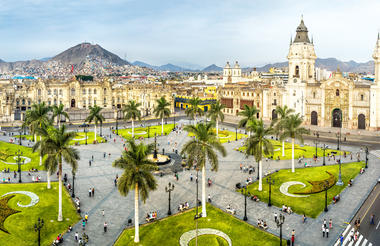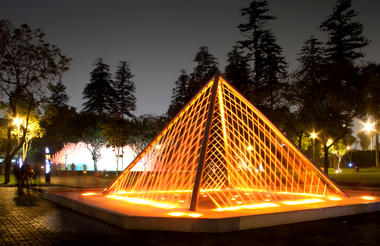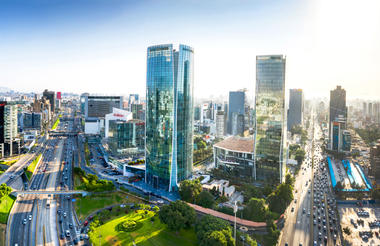Peru is most famous for the sacred archaeological site of Machu Picchu – visited each year by scores of intrepid hikers who brave the Inca Trail’s arduous slopes to explore the age-old ruins. The country’s attractions extend far beyond the mystical allure of this legendary location and include palm-fringed beaches, quaint Andean villages and archaeological treasures that predate Machu Picchu by hundreds of years – all imbued with the nation’s rich melange of indigenous and colonial cultures. Equally enticing are the exotic reaches of Peru’s Amazon rainforest; Lima’s superb eateries, exquisite architecture and effervescent nightlife; the glittering, mountain-ringed waters of Lake Titicaca; and the vibrant city of Cusco, referred to by the Incas as ‘the centre of the world’.
Peru’s capital is a fantastic city to tour, dotted with a multitude of cultural sites and beautifully preserved architecture. Founded by the conquistador Francisco Pizarro in 1535, Lima was first named ‘City of Kings’ – a biblical reference to the ‘Three Wise Men of the East’ – before its name was changed by the Spanish colonialists. The most significant historical buildings are located around the Plaza Mayor, the most notable being the Government Palace, where one can still observe the changing of the guard performed by the Húsares de Junín. The beautiful Cathedral and the various small palaces and colonial balconies also play also their part in the beauty of the city. Another highlight is the famed Larco Herrera Museum, documenting the millennial cultures that preceded the Inca civilization and containing a priceless collection of pre-Columbian artifacts, including some of South America's finest pre-Inca erotic pottery.
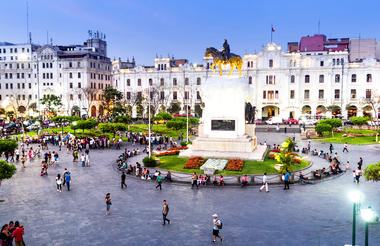
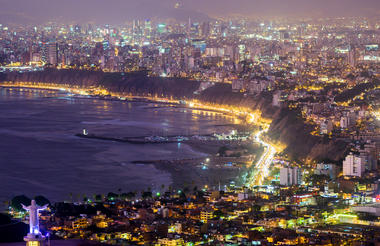
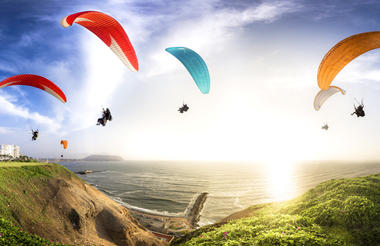
Spanning vast areas of savanna and rainforest, the Tambopata National Reserve rests in the Amazon Basin of southeast Peru, and is known for its spectacular displays of wildlife and variety of fun outdoor activities. Perhaps the most famous drawcard of the area is the mass of rainbow-coloured macaws which feed on the salted walls of the reserve’s lakes, in their thousands. Home to more species of birds and butterflies than any place of similar size on earth, as well as monkeys, otters, jaguars, and tapirs, the rainforest provides a wonderful experience for animal lovers. A selection of hikes and guided tours are on offer, giving visitors the chance to meander along canopy walkways or explore the jungle by night. Don’t miss the opportunity to cruise along the exquisite rivers and lakes in rentable motorised boats or canoes.



Also known as Urubamba Valley, the Sacred Valley of the Incas is located in the Peruvian Andes, beneath the world-famous site of Machu Picchu and not far from Cuzco, the unofficial Inca capital. This fertile valley is fed by a network of waterways and encompasses a wealth of archaeological sites, including Ollantaytambo, renowned for its extensive Inca ruins; Tipon, which features ancient agricultural terracing and a working irrigation system; and Pisac, with its ancient vestiges and colourful weekly market.
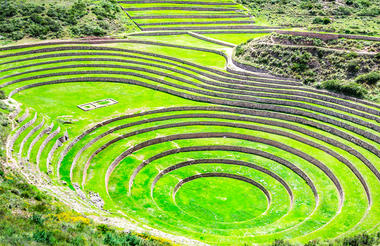
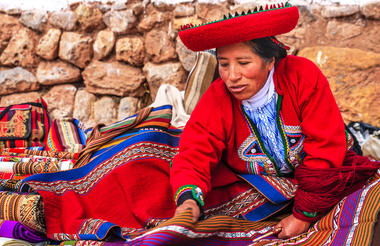
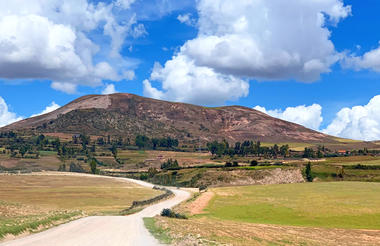
Perched high up in the Andes, Machu Picchu Pueblo is a riverside town known for its proximity to the famous Machu Picchu ruins. This cloud-forest town is encircled by towering forested cliffs and boasts an endless array of hotels, restaurants, markets and labyrinthine streets. Machu Picchu Pueblo, also known as Aguas Calientes, serves as an excellent base to explore the renowned ancient archaeological site of Machu Picchu. Visitors can enjoy various other activities, including having a relaxing massage after a long day of exploring, taking a stroll through lush rainforest to the Mandor Waterfalls, embarking on an adventurous hike up the Putucusi Mountain or soaking in the relaxing thermal baths with the Andes as your backdrop. Don’t miss the Machu Picchu Museum and Botanical Gardens, displaying the area’s history and diversity of indigenous flora.
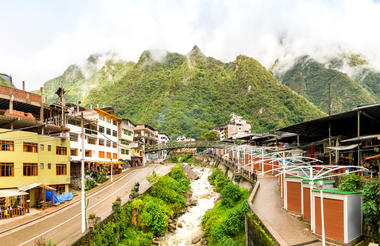
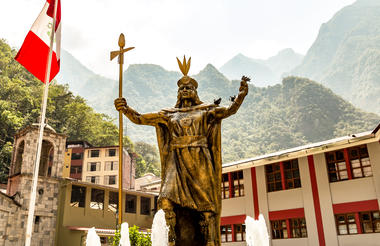
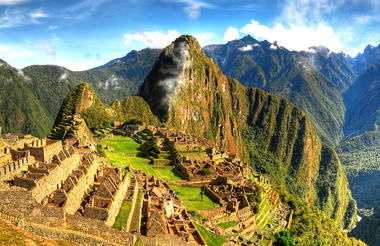
Once called the ‘Navel of the World’ by the Incas, Cusco rises in the southern Andes of Peru, where colonial grandeur meets the enduring stonework of the Inca Empire. A UNESCO World Heritage Site, it serves as the main gateway to Machu Picchu, the Sacred Valley, and surrounding ruins. At its centre, the Plaza de Armas—once Huacaypata—remains alive with cafés, arcades, and the 16th-century Cusco Cathedral, built from Sacsayhuamán’s stones. Nearby, the San Blas district unfolds with whitewashed adobe houses, blue balconies, and workshops where artisans craft metalwork, woodcarvings, and sacred art. Across the city, layers of history reveal themselves in landmarks such as the Korikancha, the Inca street of Hatun Rumiyoc with its twelve-angled stone, the Museum of Colonial Art, and the ancient shrines and water temples scattered through the surrounding hills.
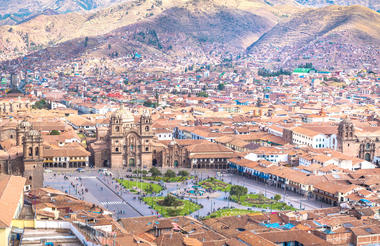
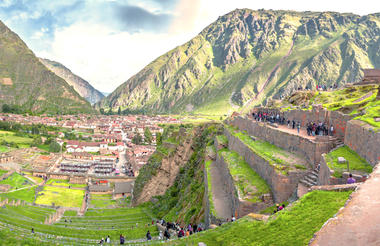
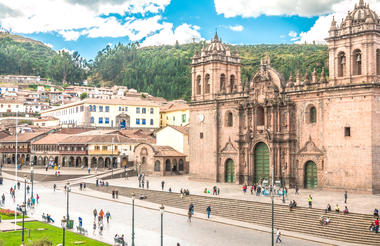
Set on the shores of glistening Lake Titicaca, on the Altiplano of Peru, this large city is dubbed the ‘folklore capital' of the country, well known for its traditional music and dance. It is also famous for its incredible collection of floating islands - man-made islands created from reeds, which exhibit the unique survivalist culture that has been alive here since pre-Incan times. Other highlights include visits to the atmospheric, historical Church of San Pedro, the gorgeous Sistine Chapel of the Americas, and a stroll along the boardwalk on the shoreline of Lake Titicaca. Active types should take on the challenge to climb up the 700 steps to the Kuntur Wasi viewpoint, which is presided over by a massive metal condor sculpture, for the reward of breathtaking vistas across the city and Lake Titicaca beyond.



Home to ancient traditions and cultures that are fast disappearing, Bolivia is the continent’s most indigenous country, with 60% of its inhabitants descended from Native Americans - a rich heritage that is evident in the local art, cuisine, music and traditions. Equally as fascinating is the incredibly diverse landscape, stretching from the central Andes to the Amazon Basin and encompassing a terrain that includes snowy peaks, the world’s highest navigable lake, rainforests, dry valleys, and volcanoes both active and extinct. Whether you are in search of colourful festivals, ancient remains or an outdoor adventure, Bolivia is a tourist’s treat waiting to be discovered.
The largest island on Lake Titicaca, the “Island in the Sun” is an ancient holy Inca site with over 80 ruins dating back to the 15th century AD. The rocky piece of land can only be explored by foot and there are several walking tracks to help visitors get around. Among the Inca monuments, tourists will find the Inca Table, a platform thought to have been used for human sacrifices; the remains of a two-story palace; and a set of rock impressions dubbed The Footsteps of the Sun. The island also boasts an Inca gold museum and a spring that the Spaniards thought to be the fountain of youth.



Surrounded by the peaks of the Andean Plateau and overlooked by the 6402m Mt. Illimani, La Paz is a truly breathtaking city whose buildings sprawl across the surrounding canyon, reaching altitudes of up to 4100m. While the sight of the city is reason enough to visit, La Paz holds a number of attractions sure to keep tourists fascinated. Take a walk along Calle Jaen, a colonial street lined with museums, explore the city's cathedrals or wander through some of the colourful markets, including the 'Witches' Market' where llama foetuses and dried frogs can be found for sale.



Located in the southwest of Bolivia, the small town of Uyuni is not a tourist destination per se, but rather a starting point for those wishing to explore the region’s extraordinary landscape. Group tours leave regularly from Uyuni, taking visitors on a scenic journey that includes an antique train cemetery, thermal baths, rock formations, and the remarkable Uyuni salt flats. Spanning more than 10 000 square kilometres and containing 10 billion tonnes of glistening salt, 'Salar de Uyuni' is the world’s largest salt plain, offering breathtaking views that place it amongst Bolivia’s main attractions.
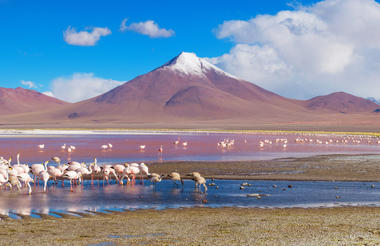
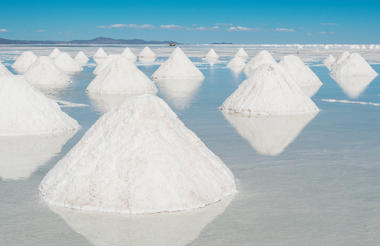
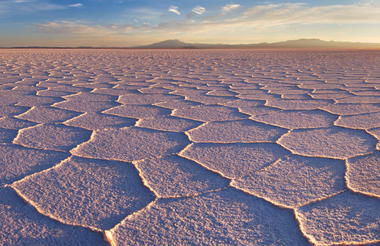
As previously described



Peru is most famous for the sacred archaeological site of Machu Picchu – visited each year by scores of intrepid hikers who brave the Inca Trail’s arduous slopes to explore the age-old ruins. The country’s attractions extend far beyond the mystical allure of this legendary location and include palm-fringed beaches, quaint Andean villages and archaeological treasures that predate Machu Picchu by hundreds of years – all imbued with the nation’s rich melange of indigenous and colonial cultures. Equally enticing are the exotic reaches of Peru’s Amazon rainforest; Lima’s superb eateries, exquisite architecture and effervescent nightlife; the glittering, mountain-ringed waters of Lake Titicaca; and the vibrant city of Cusco, referred to by the Incas as ‘the centre of the world’.
As previously described
